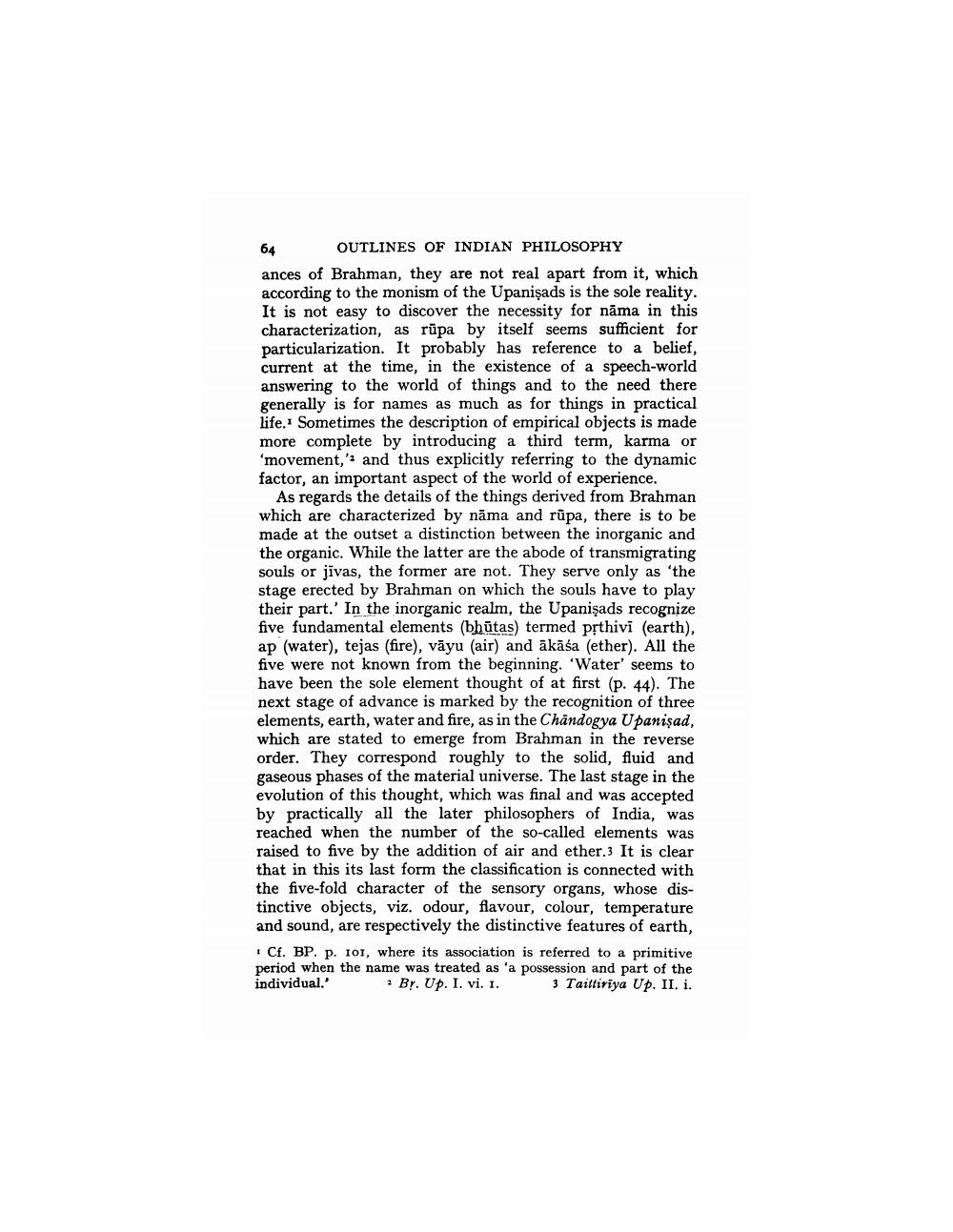________________
64
OUTLINES OF INDIAN PHILOSOPHY ances of Brahman, they are not real apart from it, which according to the monism of the Upanişads is the sole reality. It is not easy to discover the necessity for nāma in this characterization, as rūpa by itself seems sufficient for particularization. It probably has reference to a belief, current at the time, in the existence of a speech-world answering to the world of things and to the need there generally is for names as much as for things in practical life. Sometimes the description of empirical objects is made more complete by introducing a third term, karma or 'movement,' and thus explicitly referring to the dynamic factor, an important aspect of the world of experience.
As regards the details of the things derived from Brahman which are characterized by nāma and rupa, there is to be made at the outset a distinction between the inorganic and the organic. While the latter are the abode of transmigrating souls or jivas, the former are not. They serve only as 'the stage erected by Brahman on which the souls have to play their part.' In the inorganic realm, the Upanişads recognize five fundamental elements (bhūtas) termed prthivi (earth), ap (water), tejas (fire), vāyu (air) and äkāśa (ether). All the five were not known from the beginning. 'Water' seems to have been the sole element thought of at first (p. 44). The next stage of advance is marked by the recognition of three elements, earth, water and fire, as in the Chandogya Upanişad, which are stated to emerge from Brahman in the reverse order. They correspond roughly to the solid, fluid and gaseous phases of the material universe. The last stage in the evolution of this thought, which was final and was accepted by practically all the later philosophers of India, was reached when the number of the so-called elements was raised to five by the addition of air and ether. It is clear that in this its last form the classification is connected with the five-fold character of the sensory organs, whose distinctive objects, viz. odour, flavour, colour, temperature and sound, are respectively the distinctive features of earth,
Cf. BP. P. IOT, where its association is referred to a primitive period when the name was treated as 'a possession and part of the individual.' - Br. Up. I. vi. I. 3 Taittiriya Up. II. i.




